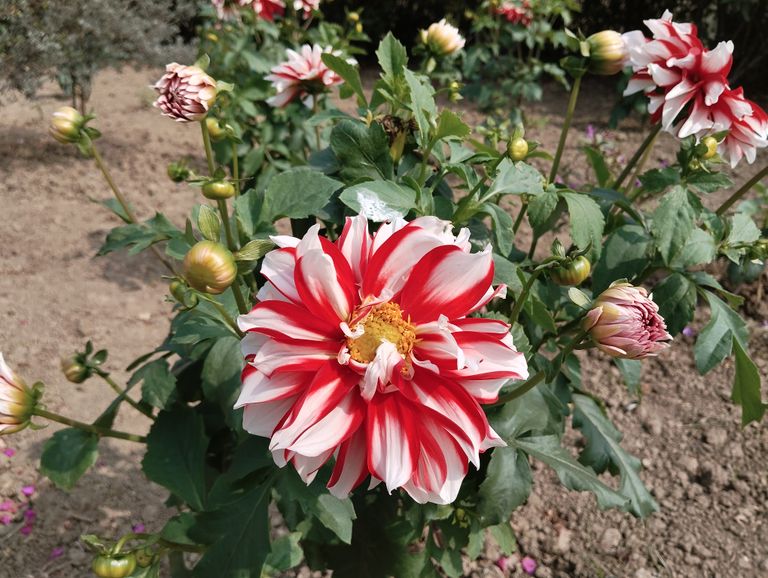
Dahlia Flower Photography A Guide to Capturing Their Stunning Beauty.
Dahlia flowers, known for their vibrant colors and intricate petal patterns, are a photographer's delight. Whether you're an amateur or a seasoned professional, photographing dahlias offers endless creative opportunities. In this blog, we’ll explore techniques, tips, and ideas to help you capture the unparalleled beauty of these flowers.
- Understanding Dahlia Flowers
Dahlias are native to Mexico and Central America and are prized for their diversity in size, shape, and color. They bloom in summer and autumn, creating a spectacular display. With over 42 species and countless hybrids, dahlias range from small pom-pom varieties to large dinner-plate types. Their layered petals and vivid hues make them a favorite subject for macro and nature photography.
- Essential Photography Gear
While you can capture stunning images with basic equipment, having the right gear can elevate your results:
Camera: A DSLR or mirrorless camera with manual controls is ideal.
Lenses: A macro lens (50mm or 100mm) is perfect for close-ups, while a telephoto lens helps capture dahlias from a distance.
Tripod: For steady shots, especially in low light, a sturdy tripod is essential.
Lighting: Use natural light for the best results. A reflector or diffuser can help soften harsh shadows.
Accessories: A polarizing filter enhances color saturation and reduces glare.
- Choosing the Right Time and Location
Timing: Early morning or late afternoon provides soft, golden light that enhances the flowers' natural colors.
Location: Botanical gardens, dahlia farms, or your backyard are excellent spots. Ensure the flowers are well-lit and free from damage or pests.
Weather: Overcast days are great for photography as the diffused light prevents harsh shadows.
- Composing Your Shot
Angles: Experiment with different angles. Capture the flower from the top, side, or even underneath to reveal unique perspectives.
Background: Use a clean, uncluttered background to highlight the dahlia. A blurred (bokeh) effect works wonderfully to make the flower pop.
Framing: Incorporate elements like leaves, stems, or other flowers for a natural composition.
- Macro Photography Tips
Macro photography lets you capture the intricate details of a dahlia’s petals:
Focus: Use manual focus for precision, especially when shooting up close.
Aperture: A wider aperture (f/2.8 - f/5.6) creates a shallow depth of field, drawing attention to the flower's details.
Stability: Keep your hands steady or use a tripod to avoid blurring.
Details: Highlight dew drops, petal patterns, or the flower's vibrant center.
- Using Natural Light Effectively
Golden Hour: The soft light during sunrise or sunset enhances the colors and adds warmth.
Diffused Light: On bright days, use a diffuser to soften shadows.
Backlighting: Position the dahlia between you and the light source for a dramatic glow.
- Post-Processing Tips
Editing can transform a good photo into a masterpiece:
Software: Use tools like Adobe Lightroom or Photoshop for adjustments.
Color Correction: Enhance the flower's natural hues while maintaining realism.
Sharpening: Highlight details like petal edges and textures.
Cropping: Remove unnecessary elements to focus attention on the flower.
- Creative Ideas for Dahlia Photography
Close-Up Shots: Focus on the petals or center for abstract and artistic results.
Flower Clusters: Capture multiple dahlias to showcase their variety.
Water Droplets: Spritz the flowers with water for a fresh, dewy look.
Insects: Photograph pollinators like bees or butterflies interacting with the flowers.
- Overcoming Common Challenges
Wind: Use a windscreen or wait for a calm moment to avoid motion blur.
Lighting: Avoid harsh midday sun as it can wash out the colors.
Clutter: Remove distracting elements like wilted petals or stray leaves.
- Inspiration from Dahlia Photography
Dahlia photography isn’t just about technique; it’s about capturing emotion and beauty. Study the work of floral photographers, visit dahlia festivals, or join photography groups to get inspired.
Final Thoughts
Photographing dahlia flowers is a rewarding experience, combining artistry with the wonders of nature. With the right preparation and creativity, you can capture their elegance in stunning detail. So, grab your camera, head to the nearest garden, and let the magic of dahlias unfold before your lens.
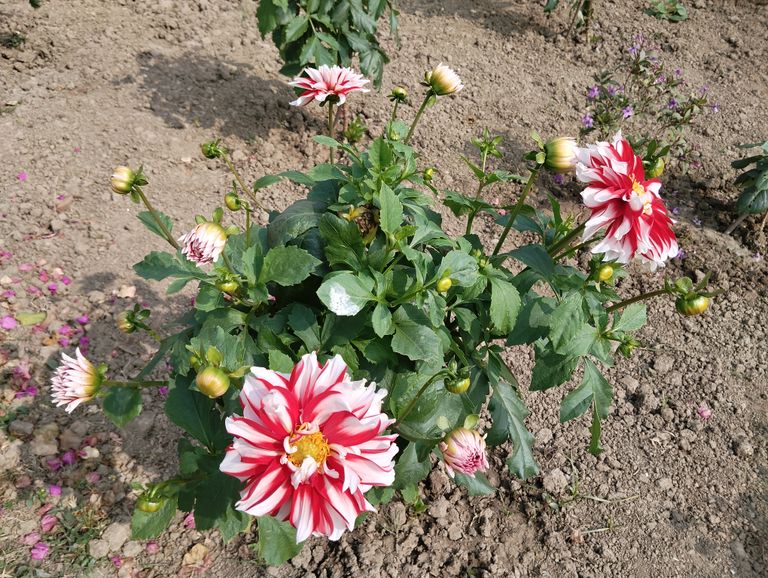
How to Plant Dahlia Flower Seedlings: A Comprehensive Guide
Dahlias are one of the most beautiful and versatile flowers, known for their wide range of colors, shapes, and sizes. Whether you’re a seasoned gardener or a beginner, planting dahlia seedlings can bring vibrant beauty to your garden. This guide will walk you through the step-by-step process of planting dahlia seedlings successfully.
- Choosing the Right Variety of Dahlia
Dahlias come in a variety of shapes and sizes, from small pom-pom blooms to large dinner-plate flowers. Before planting, consider the following:
Space: Smaller varieties are suitable for containers, while larger types require more space.
Climate: Dahlias thrive in warm climates with plenty of sunlight.
Purpose: Choose colors and types that complement your garden or landscaping theme.
- Preparing the Soil
Dahlias grow best in well-drained, nutrient-rich soil. Follow these steps to prepare the soil:
Test the pH: Dahlias prefer slightly acidic to neutral soil, with a pH between 6.5 and 7.0.
Add Organic Matter: Mix compost or well-rotted manure into the soil to improve fertility.
Ensure Drainage: Avoid waterlogging by ensuring the soil has proper drainage. You can mix sand or perlite if necessary.
- Choosing the Planting Location
Select a sunny spot in your garden where dahlias can get at least 6–8 hours of direct sunlight daily. Avoid areas with strong winds or heavy shade.
- Planting the Seedlings
When to Plant
Plant dahlia seedlings after the last frost, as they are sensitive to cold.
How to Plant
- Spacing: Space the seedlings 18–24 inches apart, depending on the variety.
- Digging Holes: Dig holes about 4–6 inches deep and wide enough to accommodate the roots.
- Planting: Place the seedling in the hole, ensuring the roots are well-covered with soil. Gently press the soil around the base to remove air pockets.
- Watering: Water the seedlings immediately after planting to help them settle.
- Supporting the Plants
As dahlias grow, their stems can become heavy with blooms. Use stakes or cages to support taller varieties and prevent them from bending or breaking. Insert the stake into the ground at planting time to avoid damaging the roots later.
- Watering and Fertilizing
Watering
Dahlias need consistent moisture but should not be overwatered. Water deeply 2–3 times a week, depending on the weather.
Fertilizing
Use a low-nitrogen fertilizer to promote healthy blooms. Apply fertilizer every 3–4 weeks during the growing season.
- Mulching
Apply a layer of mulch around the base of the plants to retain soil moisture, suppress weeds, and regulate soil temperature.
- Pruning and Deadheading
Pruning: Pinch off the tips of young plants when they are about 12 inches tall to encourage bushier growth.
Deadheading: Remove spent flowers regularly to promote new blooms and extend the flowering period.
- Pest and Disease Control
Dahlias are prone to pests like aphids, slugs, and spider mites, as well as diseases such as powdery mildew. Keep your plants healthy by:
Inspecting them regularly.
Using organic insecticides or neem oil for pest control.
Ensuring good air circulation to prevent fungal diseases.
- Caring Through the Seasons
Summer: Regularly water and fertilize your dahlias for continuous blooms.
Fall: As temperatures drop, dahlias will begin to fade. Stop fertilizing and reduce watering.
Winter: In cold climates, dig up the tubers after the first frost and store them in a cool, dry place.
Planting and caring for dahlia seedlings is a rewarding experience. With proper preparation and maintenance, these stunning flowers will bring vibrant colors and joy to your garden throughout the blooming season. Follow this guide, and your dahlias will flourish, making your garden the envy of all who see it.
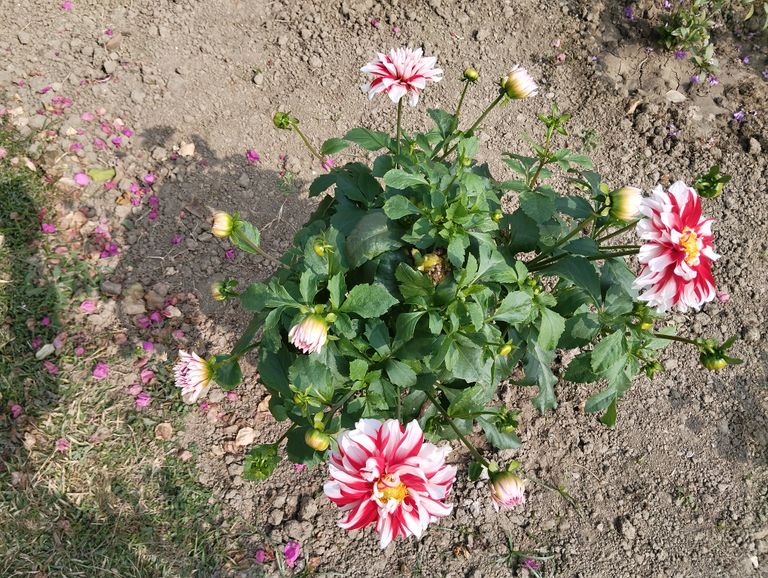
Dahlia Flower Varieties: A Complete Guide
Dahlias are one of the most diverse and spectacular flowers, loved for their wide range of colors, shapes, and sizes. Native to Mexico and Central America, dahlias are perennial plants belonging to the Asteraceae family. They have become a favorite among gardeners and flower enthusiasts for their versatility and vibrant beauty. This blog explores the different varieties of dahlias, helping you choose the perfect ones for your garden.
Categories of Dahlia Flowers
Dahlias are classified based on their flower shape, size, and petal arrangement. Here are the most popular categories:
- Single-Flowered Dahlias
These have a single row of petals surrounding a central disc. They are simple yet elegant, often attracting bees and butterflies to the garden.
Popular Varieties: Bright Eyes, Bishop of Llandaff
Best For: Pollinator gardens, casual landscapes
- Decorative Dahlias
Known for their fully double blooms, decorative dahlias are further divided into formal (symmetrical petals) and informal (less structured petals).
Popular Varieties: Kelvin Floodlight, Café au Lait
Best For: Bouquets, flower shows
- Cactus Dahlias
These have narrow, pointed petals that roll back, creating a spiky, dramatic appearance.
Popular Varieties: Juul’s Allstar, Park Princess
Best For: Unique landscapes, focal points in gardens
- Semi-Cactus Dahlias
A cross between cactus and decorative types, these flowers have petals that are partially rolled.
Popular Varieties: Myrtles Folly, Show ‘n’ Tell
Best For: Versatile gardening, statement flower beds
- Ball Dahlias
As the name suggests, these have perfectly round, ball-like blooms with tightly arranged petals.
Popular Varieties: Cornel, Jowey Winnie
Best For: Formal gardens, cut flower arrangements
- Pompon Dahlias
Smaller than ball dahlias, pompon varieties have tightly packed petals forming a miniature, round bloom.
Popular Varieties: Franz Kafka, Small World
Best For: Compact gardens, small floral displays
- Collarette Dahlias
These feature an outer row of flat petals and a smaller inner row, creating a collar-like appearance.
Popular Varieties: Night Butterfly, Pooh
Best For: Cottage gardens, pollinator-friendly spaces
- Waterlily Dahlias
Resembling waterlily flowers, these have flat, wide petals and a delicate, symmetrical form.
Popular Varieties: Cameo, Taratahi Ruby
Best For: Romantic gardens, floral decorations
- Anemone-Flowered Dahlias
These have a central cluster of tubular petals surrounded by flat outer petals, giving a unique texture.
Popular Varieties: Mambo, Blue Bayou
Best For: Exotic gardens, mixed borders
- Peony-Flowered Dahlias
Peony dahlias have a row or two of flat petals surrounding an open center, similar to peonies.
Popular Varieties: Bishop’s Children, Fascination
Best For: Informal gardens, mixed flower beds
Sizes of Dahlia Flowers
Dahlias also vary significantly in size:
- Giant Dahlias: Blooms over 10 inches in diameter (e.g., Dinnerplate varieties like Café au Lait).
- Large Dahlias: 8-10 inches (e.g., Thomas Edison).
- Medium Dahlias: 4-8 inches (e.g., Sylvia).
- Small Dahlias: Under 4 inches (e.g., Bantling).
Color Spectrum of Dahlias
Dahlias are available in nearly every color except true blue. Common shades include:
Red: Passion and love (e.g., Arabian Night)
Pink: Romance and grace (e.g., Gerrie Hoek)
Yellow: Joy and energy (e.g., Kelvin Floodlight)
White: Purity and peace (e.g., My Love)
Purple: Elegance and royalty (e.g., Thomas Edison)
Multi-Colored: Playful and vibrant (e.g., Fire and Ice)
How to Choose the Right Dahlia for Your Garden
When selecting dahlia varieties, consider the following:
- Space Availability: Compact varieties like pompons are ideal for small gardens, while giant dahlias require more room.
- Purpose: Decorative dahlias are excellent for bouquets, while single-flowered types attract pollinators.
- Climate: Dahlias thrive in well-drained soil with ample sunlight. Choose hardy varieties if you live in colder regions.
With over 40 recognized species and thousands of cultivars, dahlias offer endless possibilities for gardeners and florists. Their versatility makes them suitable for all garden styles and purposes, from vibrant displays to delicate arrangements. Whether you’re a beginner or an experienced gardener, there’s a dahlia variety perfect for your needs.
Start exploring the world of dahlias and enjoy the unmatched beauty they bring to your garden.
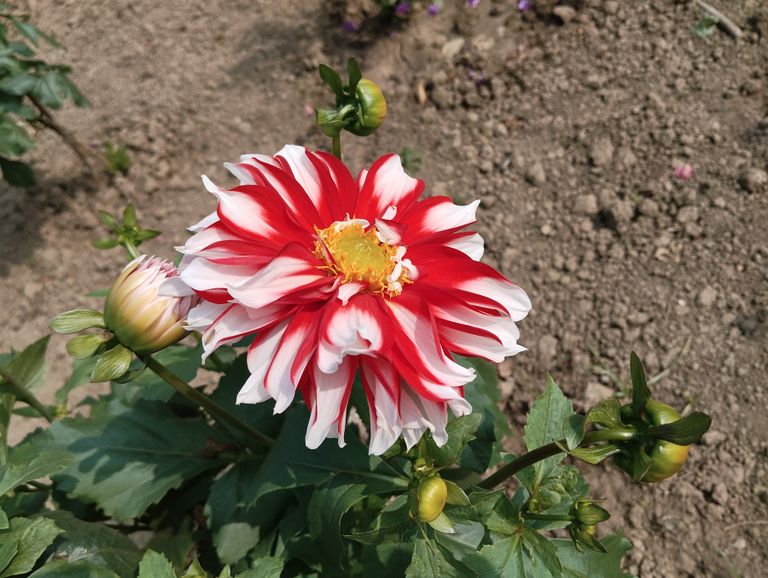
How to Care for Dahlia Plants: A Complete Guide
Dahlias are vibrant, colorful flowers that can elevate the beauty of any garden. Native to Mexico, these stunning plants come in various sizes, shapes, and colors, making them a favorite for gardeners worldwide. To ensure your dahlia plants thrive and produce abundant blooms, proper care is essential. This blog provides a comprehensive guide to growing and maintaining dahlia plants.
- Choosing the Right Location
Dahlias thrive in a sunny environment. Select a location in your garden that receives at least 6-8 hours of direct sunlight daily. Morning sunlight is especially beneficial as it promotes healthy growth and prevents diseases caused by excessive moisture.
Tip: Avoid areas with heavy winds or shade, as these can hinder growth and flowering.
- Soil Preparation
Healthy soil is the foundation of a thriving dahlia plant. Dahlias prefer well-draining, fertile soil with a slightly acidic to neutral pH level (6.0–7.0).
Steps to Prepare Soil:
Loosen the soil to a depth of 12-15 inches.
Mix compost or well-rotted manure to enrich the soil.
Add a balanced fertilizer with nitrogen, phosphorus, and potassium (e.g., 10-10-10).
Tip: Avoid waterlogged soil, as it can lead to root rot.
- Planting Dahlias
Dahlias are typically grown from tubers. Plant the tubers after the last frost when the soil temperature reaches around 60°F (15°C).
Steps for Planting:
Dig a hole 6-8 inches deep and place the tuber horizontally with the "eye" facing upward.
Cover the tuber with 2-3 inches of soil initially. As the plant grows, gradually add more soil to cover it.
Space the plants 18-24 inches apart to allow proper air circulation.
- Watering Dahlias
Watering is crucial for dahlia growth, but overwatering can be detrimental.
Watering Tips:
Keep the soil moist but not soggy. Water deeply 2-3 times a week, especially during dry spells.
Avoid wetting the foliage, as this can lead to fungal diseases.
Reduce watering during rainy seasons to prevent root rot.
- Fertilizing Dahlias
Dahlias are heavy feeders and require regular fertilization.
Fertilizing Schedule:
Apply a low-nitrogen fertilizer (e.g., 5-10-10) every 3-4 weeks during the growing season.
Stop fertilizing once the plants start blooming heavily.
Tip: Excess nitrogen can result in lush foliage but fewer flowers.
- Staking and Supporting
Tall dahlia varieties may require support to prevent the stems from bending or breaking under the weight of the flowers.
How to Stake Dahlias:
Insert stakes or bamboo poles into the ground next to the plant at the time of planting.
Use soft ties or garden twine to secure the stems as they grow.
- Deadheading and Pruning
Regular deadheading encourages the plant to produce more blooms and maintains its appearance.
How to Deadhead Dahlias:
Remove spent flowers by cutting just above the nearest leaf node.
Prune any damaged or diseased foliage to keep the plant healthy.
- Pest and Disease Management
Dahlias are prone to pests like aphids, spider mites, and slugs, as well as fungal diseases such as powdery mildew and botrytis.
Prevention and Treatment:
Use insecticidal soap or neem oil to control pests.
Remove affected leaves and ensure proper spacing for air circulation.
Avoid overhead watering to minimize fungal infections.
- Overwintering Dahlias
In colder climates, dahlias cannot survive frost and must be dug up and stored during winter.
Steps to Overwinter Dahlias:
Cut the plants back to 4-6 inches after the first frost.
Carefully dig up the tubers and shake off excess soil.
Allow the tubers to dry for a few days, then store them in a cool, dry place in peat moss or sand.
- Common Problems and Solutions
Yellowing Leaves: This may indicate overwatering or nutrient deficiency. Adjust watering and fertilize accordingly.
No Blooms: Ensure the plant receives enough sunlight and reduce nitrogen in the fertilizer.
Final Thoughts
With proper care, dahlia plants can reward you with a spectacular display of blooms throughout the growing season. From planting to pest management, following these guidelines will help your dahlias flourish and become the centerpiece of your garden.
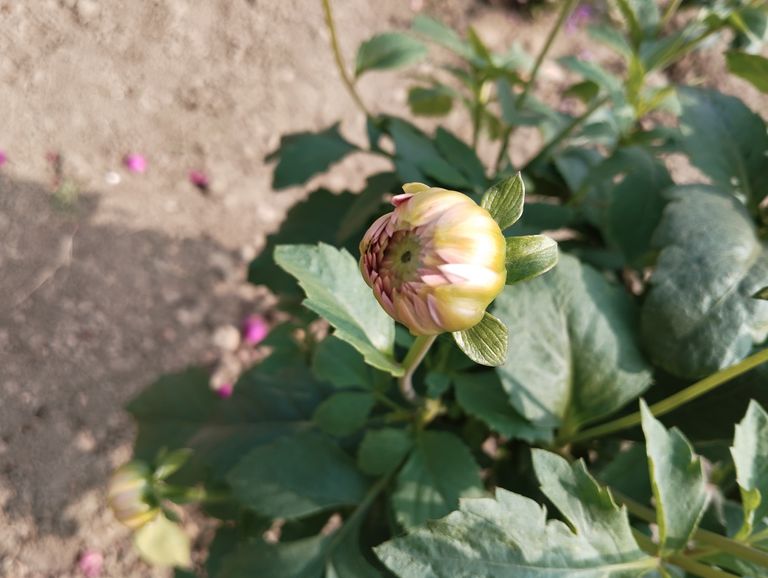
Benefits of Dahlia Flowers
Dahlia flowers are not only celebrated for their stunning beauty and vibrant colors but also for their surprising range of benefits. Originating from Central America, particularly Mexico, these flowers belong to the Asteraceae family and have gained worldwide recognition for their ornamental and practical uses. Below, we explore the various benefits of dahlia flowers, focusing on their medicinal, decorative, and ecological contributions.
- Medicinal Benefits
a. Natural Source of Inulin
Dahlia tubers are rich in inulin, a prebiotic fiber that aids in digestive health. Inulin promotes the growth of beneficial gut bacteria, improving digestion and enhancing overall gut health.
b. Diabetic-Friendly Alternative
Inulin extracted from dahlia tubers is often used as a natural sweetener, making it an excellent substitute for sugar in diabetic-friendly diets. It helps regulate blood sugar levels and reduces the risk of insulin spikes.
c. Traditional Healing Properties
In some traditional medicine systems, dahlia tubers and extracts have been used to treat skin conditions and inflammation. They are also believed to have mild antimicrobial properties, making them a natural remedy for minor infections.
- Decorative and Aesthetic Benefits
a. Garden Beautification
Dahlias are renowned for their wide variety of colors, shapes, and sizes, making them a favorite choice for gardeners. Their vibrant blooms add a touch of elegance and charm to any landscape, enhancing outdoor aesthetics.
b. Floral Arrangements
These flowers are highly sought after for floral decorations, bouquets, and wedding arrangements. Their diverse shapes, from pom-poms to star-like petals, provide versatility in design and style.
c. Symbolism and Emotional Value
Dahlia flowers symbolize strength, creativity, and elegance. They are often gifted to convey gratitude and admiration, adding emotional depth to their decorative appeal.
- Ecological Benefits
a. Pollinator Attraction
Dahlia flowers are excellent for attracting pollinators like bees, butterflies, and hummingbirds. By planting dahlias in gardens, you can support local ecosystems and promote biodiversity.
b. Low Environmental Impact
Dahlias are relatively low-maintenance plants that require minimal use of chemical fertilizers and pesticides. This makes them an environmentally friendly option for gardeners.
- Culinary Uses
While not as common as other edible flowers, dahlia tubers can be consumed. They are sometimes used in salads, soups, or as a garnish. The flavor varies depending on the variety, ranging from mildly sweet to slightly spicy.
- Economic Significance
a. Cut Flower Industry
Dahlias play a significant role in the global cut flower industry. Their long vase life and vibrant appeal make them a popular choice for commercial floriculture.
b. Tubers as a Source of Income
Dahlia tubers can be cultivated and sold, providing a source of income for farmers and gardeners. The demand for unique and rare varieties often fetches higher prices.